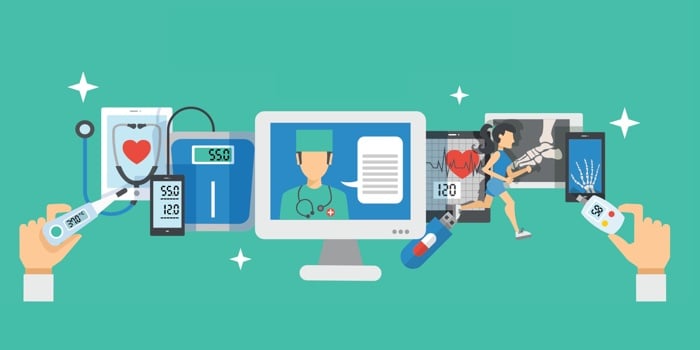 According to NEJM, Telehealth is defined as the delivery and facilitation of health and health-related services including medical care, provider and patient education, health information services, and self-care via telecommunications and digital communication technologies.
According to NEJM, Telehealth is defined as the delivery and facilitation of health and health-related services including medical care, provider and patient education, health information services, and self-care via telecommunications and digital communication technologies.
Some types of telemedicine are store-and-forward telemedicine (asynchronous telemedicine), remote patient monitoring, and real-time telemedicine.
A Rutgers article mentioned around half of the country’s hospitals use some sort of telehealth solution and recent surveys of health care executives discovered 90 percent of respondents had started the process of implementing telehealth programs at their organizations. Since Telehealth is growing rapidly here are some pros and cons to keep in mind.
Pros
Better Access
Telemedicine improves patient's access to healthcare services. They don't have to miss work, find transportation or travel far to their nearest providers. It allows Nurses and Doctors to expand their reach to patients in distant locations or rural areas.
Quality Care
The convenience of quick real-time consultations for non-emergency symptoms, frees up office appointments so healthcare professionals can spend more time with extreme case patients.
Cost Efficiencies
According to americantelemed.org, reducing or containing the cost of healthcare is one of the most important reasons for funding and adopting telehealth technologies. Telemedicine has been shown to reduce the cost of healthcare and increase efficiency through better management of chronic diseases, shared health professional staffing, reduced travel times, and fewer or shorter hospital stays.
Cons
Technology Barriers
Patients must have access to appropriate technology like a laptop or computer with video conferencing capability and internet or wifi. Some patients may not be tech-savvy and will need assistance with setting up.
Also there are sometimes glitches. Technical difficulties, such as sound or video not working properly, can disrupt a telehealth visit.
Privacy
There are some security concerns since the visit is done over the computer.
Regulatory attorney, Emily Wein said, "Your computer, your ipad, your iphone, or whatever interface or kiosk you have at your employer - these are all potential devices that could store or transmit your personal health information."
A telehealth patient's health information is being transmitted for "various modalities," increasing the potential that data might be misused, mistransmitted or accessed inappropriately, she says.
Payment
According to an article by Health Informatics, a big challenge for telehealth is reimbursement and coverage for services compared to those of in-person services. There is no guarantee of payment parity between telemedicine and in-person health care. Even in the 28 states in which payment parity laws have been passed, no apparatus exists to enforce it. This could potentially defeat the point of telemedicine to reduce health care costs and expand access to services , and could also discourage providers from offering telehealth because there is no guarantee of comparable payment.
Are you using telehealth services at your job? What are some advantages or disadvantages you've experienced? Comment below!







